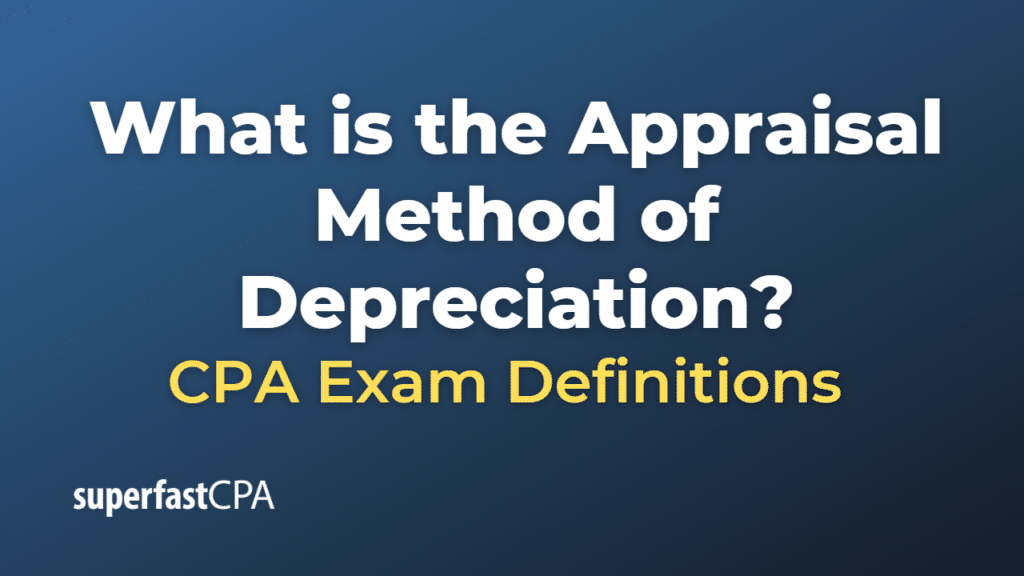Appraisal Method of Depreciation
The term “appraisal method” is not a standard method of depreciation used in accounting. In accounting, the most common methods of depreciation are:
- Straight-Line Method
- Declining Balance Method (including Double Declining Balance Method)
- Units of Production Method
- Sum-of-the-Years-Digits Method
These methods help allocate the cost of a tangible asset over its useful life, reflecting the decrease in value as the asset ages and is used in business operations.
The appraisal method might be confused with the concept of revaluation or appraisal of fixed assets, which is a process of adjusting the carrying value of an asset to reflect its current market value. This typically occurs when there’s a significant change in the asset’s fair market value or when it’s necessary to provide a more accurate representation of the company’s financial position. However, this is not a method of depreciation but rather a way to adjust the value of an asset on the balance sheet.
If you need more information on any of the standard depreciation methods or the concept of revaluation, please let me know.
Example of the Appraisal Method of Depreciation
Let’s use the straight-line method of depreciation as an example.
Suppose a company purchases a machine for $100,000. The machine has an estimated useful life of 10 years and a residual value of $10,000. The company will use the straight-line method to depreciate the machine.
Step 1: Determine the depreciable amount: Depreciable amount = Cost of the asset – Residual value Depreciable amount = $100,000 – $10,000 = $90,000
Step 2: Calculate the annual depreciation expense: Annual depreciation expense = Depreciable amount / Useful life Annual depreciation expense = $90,000 / 10 years = $9,000
According to the straight-line method, the company will record a depreciation expense of $9,000 each year for the next 10 years. The machine’s book value will decrease by $9,000 each year until it reaches its residual value of $10,000 at the end of its useful life.
Year 1:
Depreciation expense: $9,000
Book value: $100,000 – $9,000 = $91,000
Year 2:
Depreciation expense: $9,000
Book value: $91,000 – $9,000 = $82,000
This process continues until the end of the 10-year useful life, with the final book value being equal to the residual value ($10,000).













